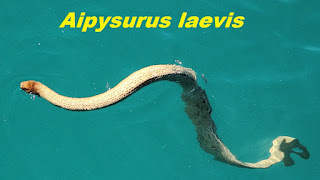Once I touch down in North America, I will have flown a sufficient distance to circumnavigate the globe twice; around 80,450 kilometers or 50,000 miles. The summation of 3 roundtrip flights from LA to Australia’s east coast, 3 return flights across the sun burnt continent from Perth to Brisbane and Sydney, and a series of connecting flights from Sydney to New Zealand, New Zealand to Melbourne, Melbourne to Hobart, and Hobart back to Sydney. Not to mention countless flights throughout the east coast between Northern Queensland and Southern New South Wales.
Between the flights I’ve completed 8 dives on the Great Barrier Reef. Surfed superb waves in Noosa on the Sunshine Coast to Snapper on the Goldie. Added at least 50 new birds, 5 new marine mammals, 7 new marine reptiles, and a few new fish to my life lists. I’ve seen the bird with the longest wingspan, a fish that ‘walks’ on land, and a mammal that lays eggs. I’ve had sharks investigate my feet, saved a panicked English swimmer from a watery death, counted thousands humpback whales, received a vigorous pecking from shearwater chicks, and navigated somewhat successfully with the Southern Cross. I’ve stood beneath strange pine-like eucalyptus trees with even stranger dog sized bats hanging from limbs and birds with a call that would rival the most dominate howler monkey.
I’ve cautiously ordered flat whites, long blacks, short blacks, Cornish pasties, sausage rolls, and Vegemite on toast with avocado. I’ve cooked kangaroo on a Barbie and eaten thousands of Tim Tams saturated with milk. I’ve used phrases like ‘No Worries’ and ‘Too Easy’, adjectives like ‘heaps’ and ‘loads’, and happily managed to avoid saying ‘mate’. I’ve spelled color and behavior with a ‘U’ without setting off spell check. I’ve hiked to the top of Emu Mountain, braved the scaffolding of Mt. Olympus, and bush-wacked to the end of the earth in Tasmania. Breathed in coal dust, diesel exhaust, whale blow, red clay powder, mud from the seabed, and salt spray from waves. I’ve won and lost a few battles with an unrelenting tarp. Drank Tooheys, Victoria Bitter (VB), Carlton Draught, XXXX Gold, James Bogues, Coopers of all colours, and a boxed wine called GOONE. I’ve been given suspicious looks by the Australian Police, interrogated by the Australian Police, and detained by the Australian Police. Passed out on the beach, sang “American Pie” intoxicated, relaxed in a hammock under the shade of a gum tree, and pretended to be a koala without contracting ‘the clap’.
I’ve befriended Germans, Canadians, Brazilians, Italians, Britons, Dutch, French, Columbians, Irish, Kiwi’s, Americans, and of course Australians. I was followed by a stalker dubbed Mel from Brisbane. I’ve seen the sad state of Aboriginal people in Cairns and the affluent state of whites in Sydney. I’ve shared possibly too many jugs, schooners, and stubbies of brew with very interesting aspiring and accomplished marine bird and mammal scientists. Laughed over episodes of Flight of the Concords and struggled to keep my sanity with large groups of volunteers. I’ve camped on a remote Tasmanian island, slept on stabbing hostel bunks, over-nighted in a yellow van, been rocked to sleep on a cruise ship, shaken awake in a dredger, and crashed the homes of some awfully hospitable and generous mates….damn I said it.
Australia truly is a country with much to offer. As I sit here in the Brisbane airport awaiting the Qantas flight that will carry me over the spatter of islands across the Pacific, I’m preparing to finish this chapter. I’ll be leaving a land ripe with potential, taking with me a trove of experiences and fond memories I won’t soon forget.
This time last year, I unintentionally began following the annual migration of Eastern Australian Humpback Whales. I Volunteered for a census of that population during their migration north in June, insured they didn’t get tangled up with explosives where they breed in August off the Great Barrier Reef, trekked back down for another study off the Sunshine Coast in October as the mothers escorted their new claves south, and watched some spectacular seabirds in February in the Southern Ocean where those new calves will learn to feed as individuals, thus completing the cycle. It is in the Southern Ocean in Tasmania where I ditched the humpbacks and began to follow a new migration, that of the shearwaters. Short-tailed Shearwaters nest on Wedge and other remote islands around Australia during the Southern Hemisphere summer, and embark on an ambitious 33,000 mile journey around the Pacific each year. So instead of the whales, I will be following these shearwaters across the equator to Alaska, where they spend the Northern Hemisphere’s summer foraging in the cold productive waters of the North Pacific. Just like Bruce Brown’s classic surf film, I will be skipping winter this year and heading to Middleton Island, a wedge of exposed seabed in the Gulf of Alaska, for an endless summer; unlike Bruce Brown unfortunately I won’t be doing much surfing.













